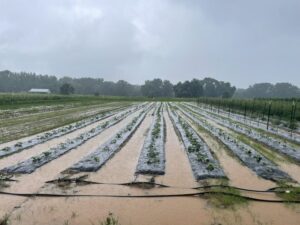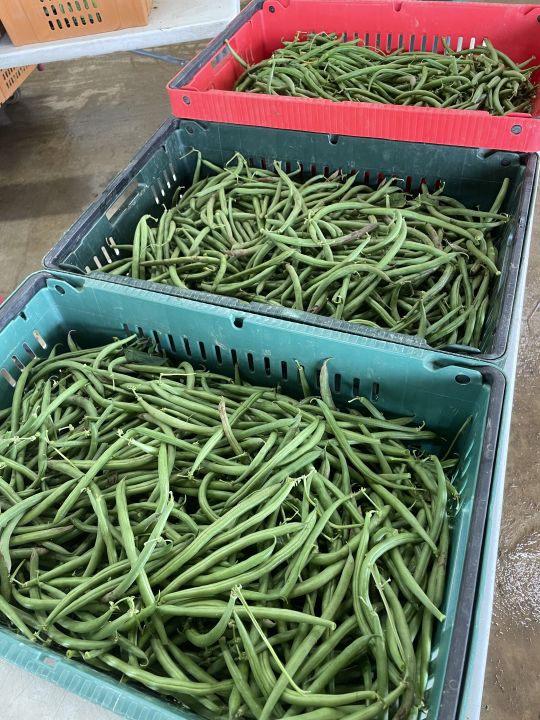Green Beans!
On Monday we cut all the green beans. This was the tie-breaker spring for green beans. A few years ago, following many years of not growing beans because harvesting them was too time consuming, we decided to try growing green beans for a single harvest. You cut the whole plant and pick the beans off, instead of picking the beans in the field over the course of a few weeks. Two years ago they did quite well. Last year was a total bust. Well this is a blockbuster year for beans. They have never grown so well! I think they liked the rain, but there was also damage on account of the rain (and accompanying fungus). Turns out that picking the beans off the plants still takes hours and hours and hours, whether you do it in the field or the wash pack. Next year I wont plant quite so much.
Too much rain!

“The farm must be loving all this rain!” I heard once or twice at the farmers market last Saturday. And while rain in moderation is necessary, more isn’t better. Here are a few of the ways we are impacted by an excess of rain:
- When it is wet, we cannot prepare beds for planting. To ensure that we have something to harvest every week, we plant crops continuously. Not being able to get the tractor in the field now means gaps in production later.
- Crops rot in the ground when the soil is saturated. This effects both the potatoes and carrots. We are desperate to get them out of the ground, but;
- The rain interferes with harvest. Some crops are extremely inconvenient to harvest when the soil is saturated – like carrots. Some, like potatoes, are impossible. Harvest efficiency is very important to our ability to farm profitably.
- The rain interferes with weed control. Mowing around the field and mowing down old crops keeps weeds from going to seed and creating a bigger problem down the road.
- “Good field sanitation” is an important pest control strategy. Mowing and turning in crops as soon as they are finished producing keep pest populations in check. This is impossible when the ground is wet.
- There are many task, such as trellising tomatoes, that cannot be done in the rain or when foliage is wet.
- Working in the wet is unpleasant and more time consuming. It takes longer to do the same job when slipping and sliding in the mud. The farmers and workers are more uncomfortable in wet clothing with soppy socks and boots.
We are just doing our best to cope with the wet situation, just like everybody else. Some of our crops are in high tunnels, and are therefor less impacted by the continual rain. We just keep telling ourselves that it has to dry out eventually.
Small and Full Shares
- green beans
- carrots
- fingerling potatoes
- squash and/or zucchini
- cucumbers
- assorted tomatoes




You must be logged in to post a comment.